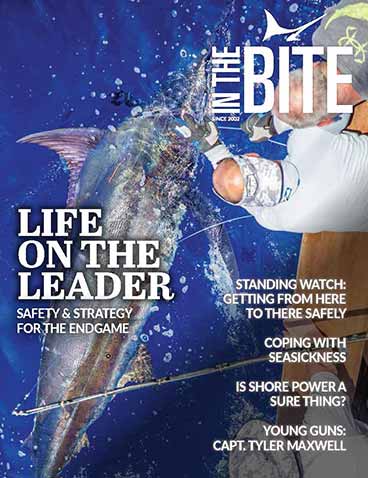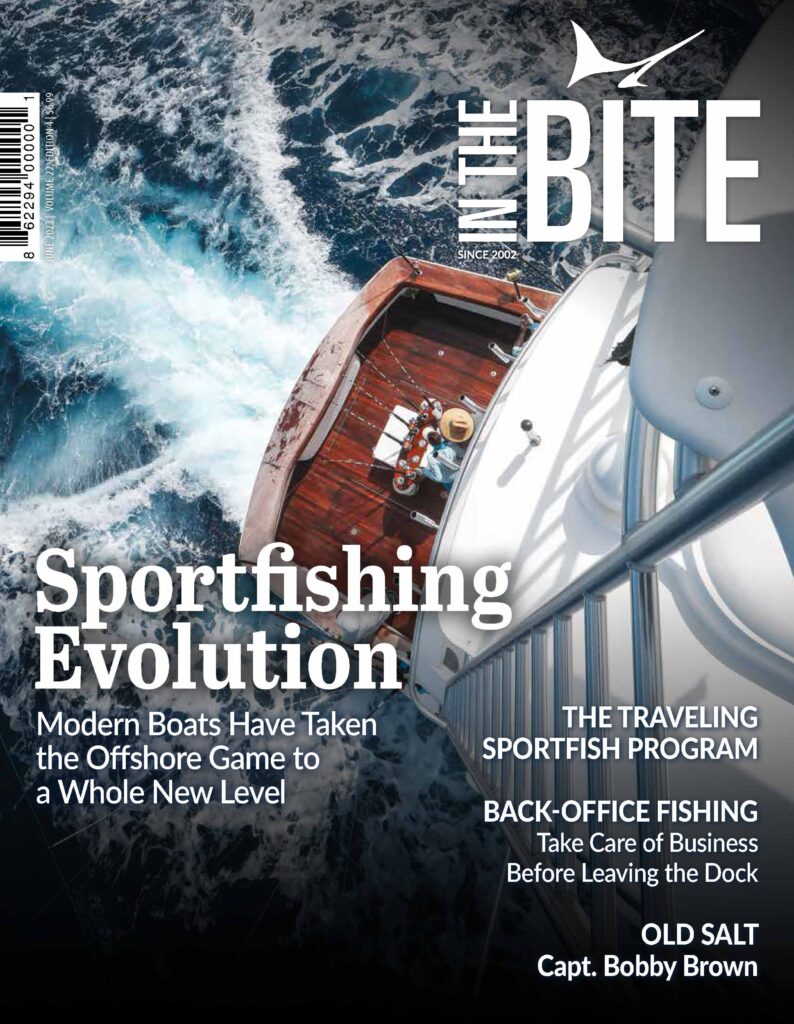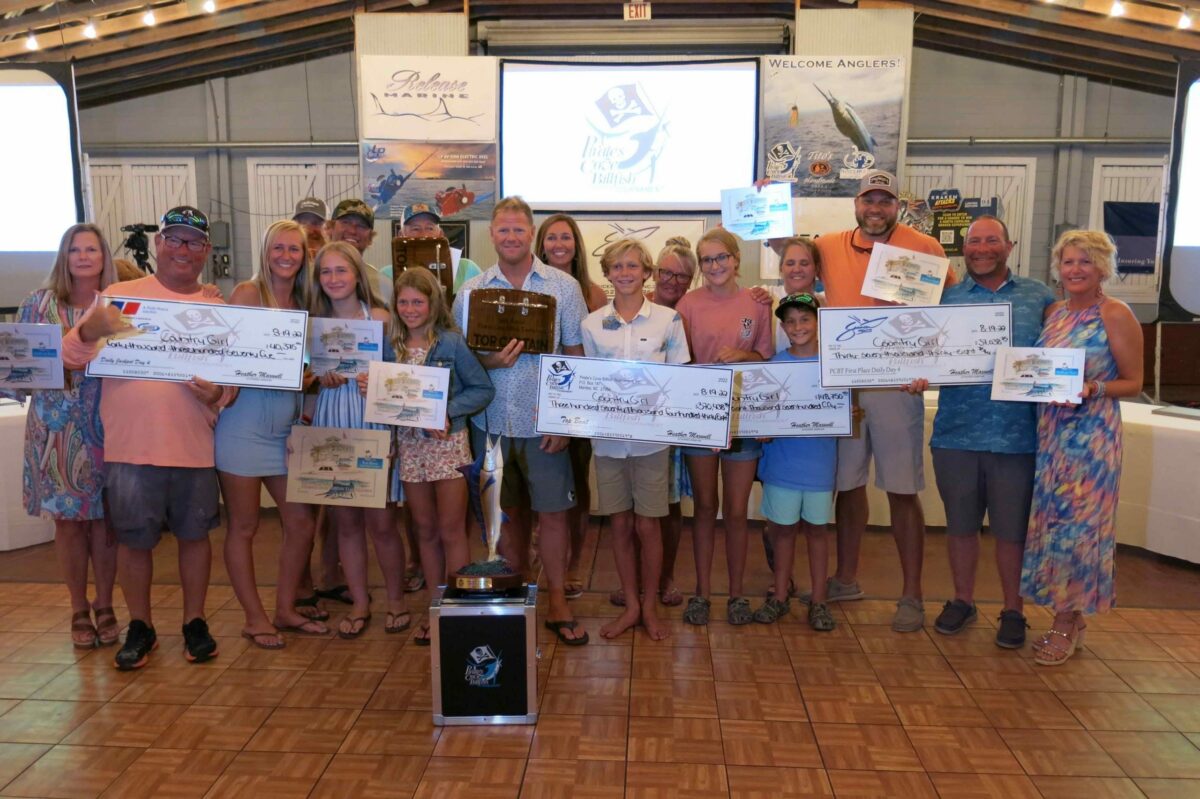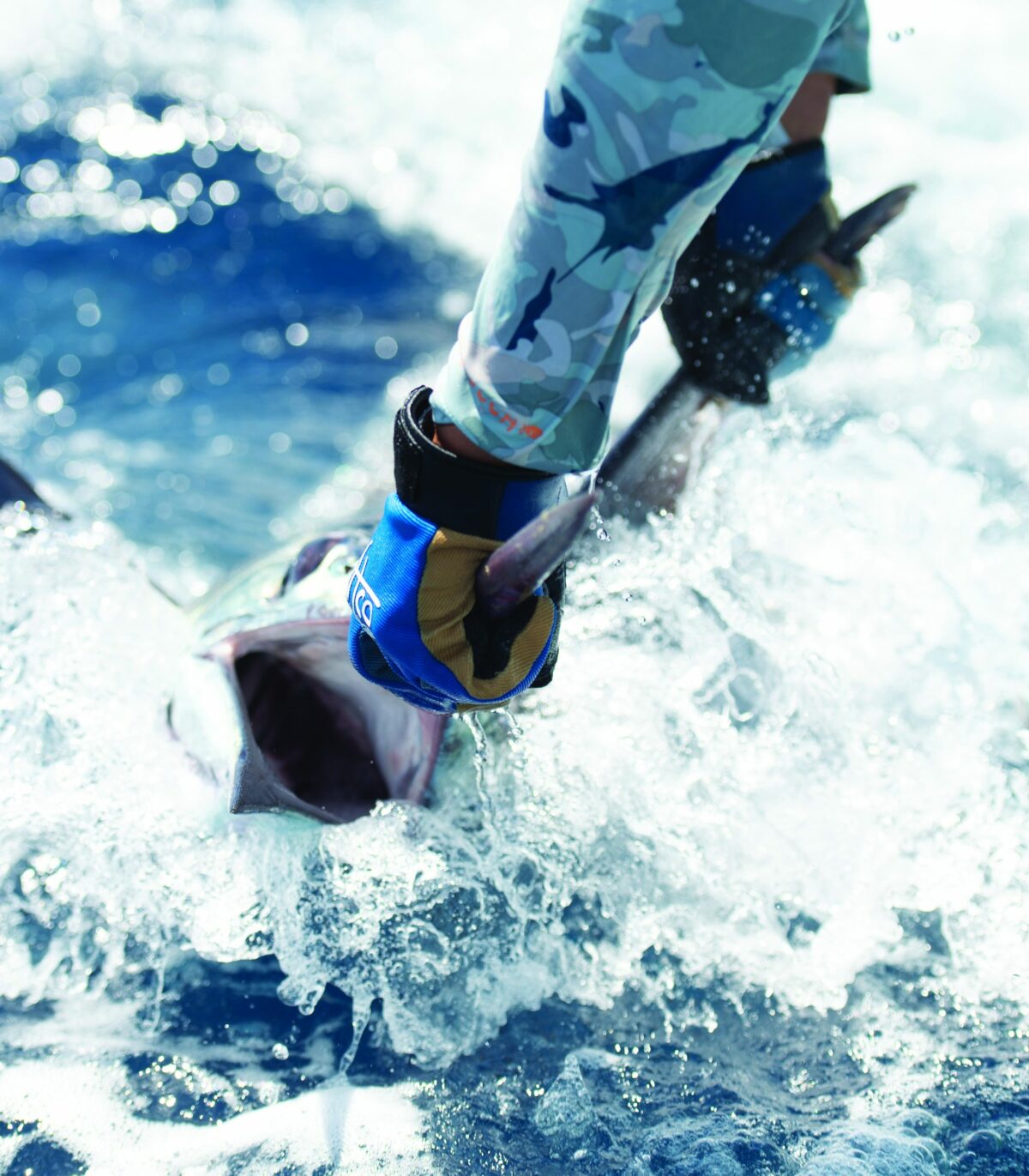Table of Contents
Photos and text by Captain Dean Butler
Without a doubt, catching billfish on fly is a great challenge for even long-term fly fishermen. Much of the recent interest in giving it a go arises from anglers, captains and crews from a conventional fishing tackle background. This factor adds another level to the challenge.
As familiar as you may be with the target species, there a whole new realm of tackle, technique and IGFA rules to get your head around. This article aims to ease the transition to fly fishing by providing a range of information about aspects of the sport. Beyond the hardware and recommended procedures, though, I encourage anglers to treat every encounter as a part of the learning process live-action reference data for understanding billfish behavior and for honing new tactics to catch them with a fly.
Fly Fishing Tackle for Billfish
The fly fishing tackle you might use to catch a trout includes three-five weight rods, matching fly lines designed to cast feather-light flies and reels with 1 to 1 ratios. The principles of billfish fly fishing tackle are pretty much the same, just beefed up and bigger all round.
Traditional, saltwater-strong 12 weights for sailfish and small marlin and 14/16 weights are perfect for most marlin of 100 pounds-plus. (Well-known brands like Sage, Loomis, Biscayne Bay and Temple Folk all have suitable rods.) The Tibor ˜Pacific is the benchmark in big game fly reels. There are a few others that are up there. The main requirement in a billfish fly reel is a drag that as smooth as a baby bum, with the capability to maintain constant pressure throughout the fight. Being direct drive, 1 to 1 reels need to be fully loaded with at least 500-600 meters of 50-pound braid (for the fastest possible retrieve).
The line should be brightly colored to allow the skipper the best visibility. Dont set drags too tight no more than a quarter of the tippet breaking strain, tested through the rod, is a good rule of thumb. The angler should apply extra drag when it needed by using their fingers or by palming the outer rim of the spool.
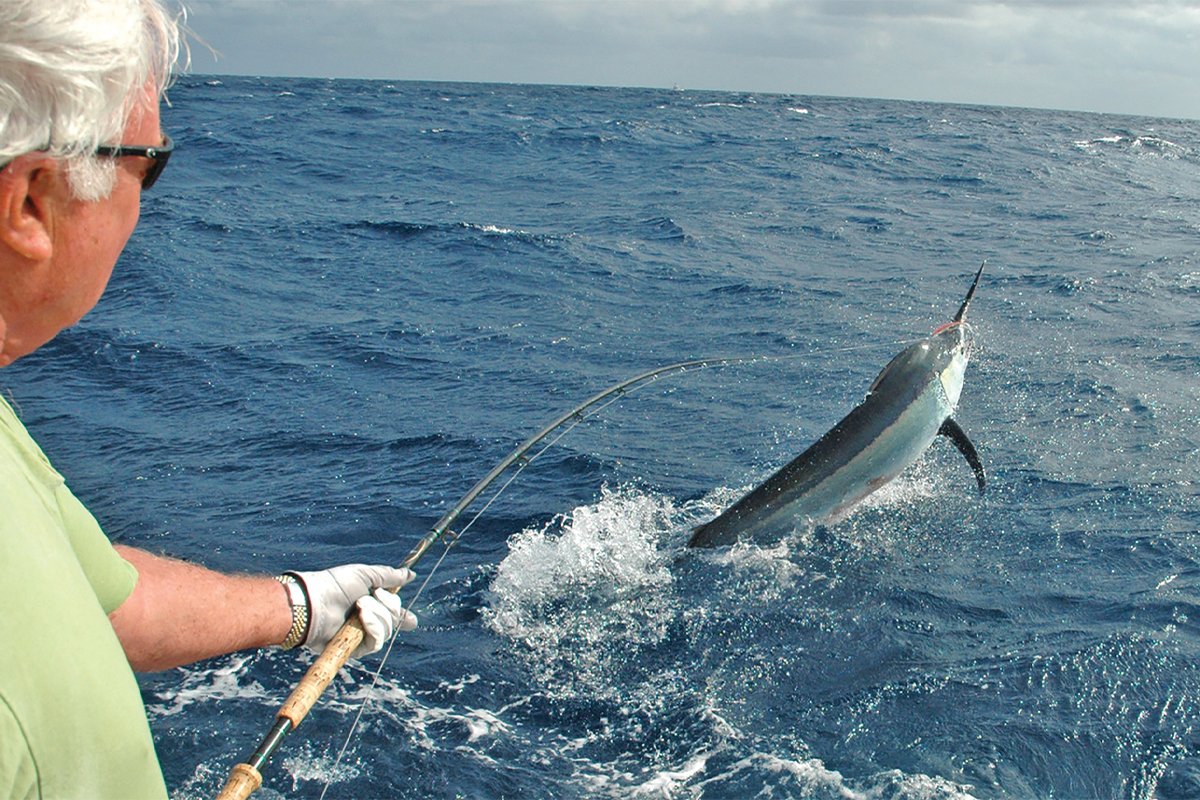
Flies and Hooks for Catching Billfish on Fly
There are two schools of thought regarding fly selection: some like to fish their flies on the surface using a big popping fly to attract attention, while others prefer a subsurface presentation using the Flashy Profile Fly (FPF).
Fishing a FPF in conjunction with a true tease where youre looking for a sub-surface going-away bite creates an excellent imitation of a dead or wounded fish that your target is looking for after following and hitting the teaser as you lead it to the boat. When the sun hits the sinking fly, the flash resembles the flanks of a baitfish. Its shimmering tail simulates movement and creates an illusion of sprinkling scales that might be falling from an injured fish.
Billfish will of course take popper flies, and although they are harder to cast in any sort of wind, a couple of big bloops can attract a fish that may have missed the sinking fly because of a glitch in the tease. Getting the right hookup is what it all about, and personally, I favor the FPFs over poppers because they offer a better chance of a corner of-the-mouth hookup. Whichever way you go, make sure your hooks are sharp.
Hook size depends on the species you are chasing. For sails and small marlin, 4/0 to 6/0 are the go, moving up to 8/0 for bigger marlin. Most anglers and crews use two hooks set at 180-degrees, no more than the legal six inches apart, with 2-3 inches best. Gamakatsu, Mustad and Owner all have chemically sharpened hook patterns that work well.
As for fly lines, if you are fishing poppers, a slow sink line to match the fly rod will work. For FPFs, use fast sink lines, 500-700 grains, that will load the rod quickly. When targeting bigger marlin, youre well advised to avoid fat, full-length intermediates or floaters which can often create tippet-breaking drag when being torn through the water by a fast, out of control fish.
Ensure that all connections are strong and that theyll go through the guides smoothly. From backing to fly line, I dont trust the factory built loops coming with fly lines these days. I prefer to splice my own loops onto the line using 50-pound braided mono and loop to loop to a double knot tied in the backing.
At the front end of the fly line I nail knot a piece of 80-pound mono, known as the butt section of a saltwater fly leader, which should be no more than three feet long. At the end of the butt section, I tie a small perfection loop that enables me to loop in the class tippet.
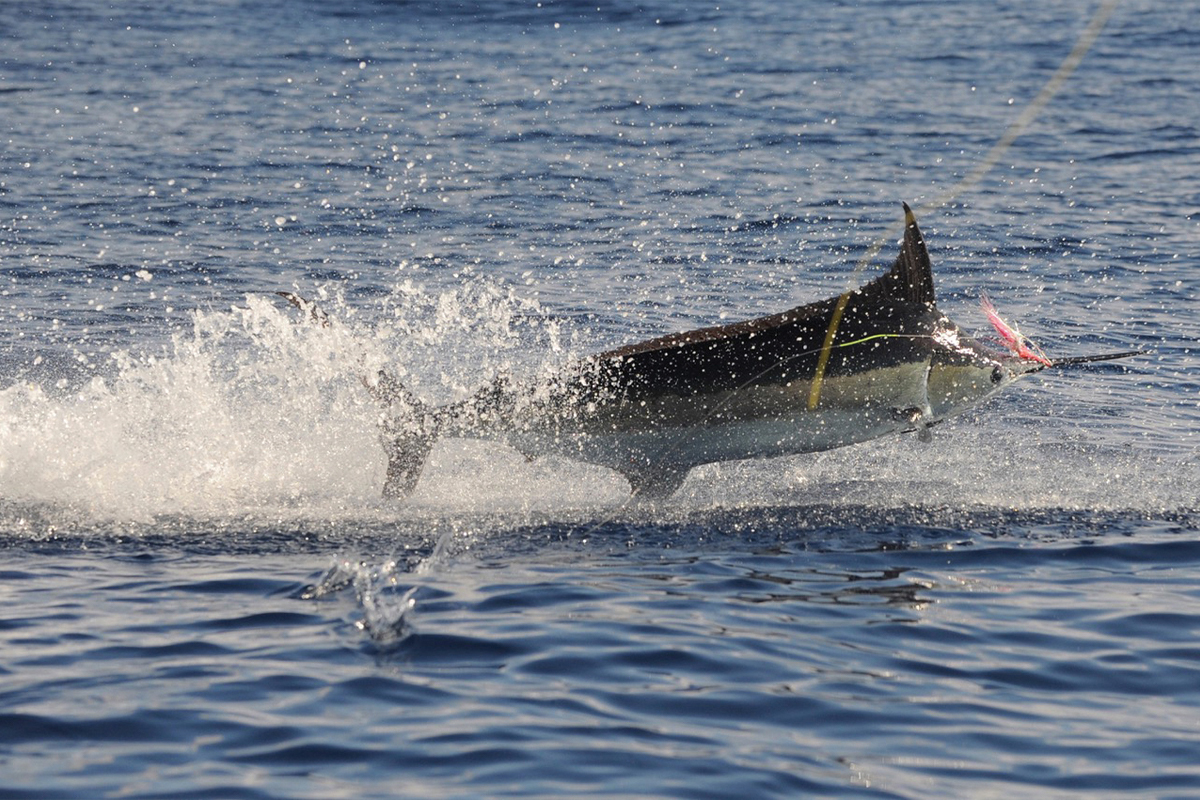
The Tease
You will get little argument from most experienced crews that pitching a bait to a fish in your spread is one of the most exciting parts of the game. It the same with casting a fly, looking for that bite, but there are some fundamental differences. The main points of difference are that you cant troll the fly because the boat must be out of gear (an IGFA stipulation) before the cast, and that a fly really doesnt look like anything a billfish wants to eat certainly nothing like a skipping mackerel or hard swimming live bait.
Most all successful hookups require a true tease, rather than just a raise and bait. A true tease scenario is one where you need the fish to actually strike the teaser to begin the deception. After the first teaser bite, the fish is expecting the prey to die, or at least slow down and sink. Instead it confronted with a still intact and fast-moving bait. Pull that teaser away from the fish and he will nearly always pursue it with more vigor. If the fish doesnt, you probably werent going to catch him on any type of tackle.
When you continue to defy the fish kill instincts, it will get hotter and hotter. In an enraged state, the marlin or sailfish is focusing solely on the teaser, letting you lead it back to the boat and into casting range. It can happen fast, but when all goes to plan, the fish will begin moving erratically and become lit up and good to go.
By this stage, there should be only one teaser in the water. The angler should be ready to cast, fly rod in hand, with 30 feet of line stripped on the deck. The fly should be skipping just behind the boat. The skipper may slow down at this stage, turn the boat to open up the wake, and be ready to go to neutral prior to the cast. With the fish tracking the teaser, when its ripped from the water, the fish will surge. When its prey disappears, it will look from side to side to try and find it. At this point, the fly has been cast as close as possible to where the teaser left the water and should slowly be sinking as if it that teaser bait that has finally died.
To set the hook, use a short, sharp strip strike often they will eat with such speed that they hook themselves. If using popping flies, the same switch can work, however, the fish should be given enough time and line to turn away from the boat before it is struck. Once the hook is set, the captain should
move forward and away from the fish to get some line in the water. The pressure from the fly line dragging should send the fish off in the opposite direction the best way to avoid being chafed off early in the fight. The beauty of billfish is that every one hooked is differently. It certainly the same when fishing them on the fly. A note to the captain, though: think about the extra belly created by a fly line and how to work with your angler to use it for your collective advantage.
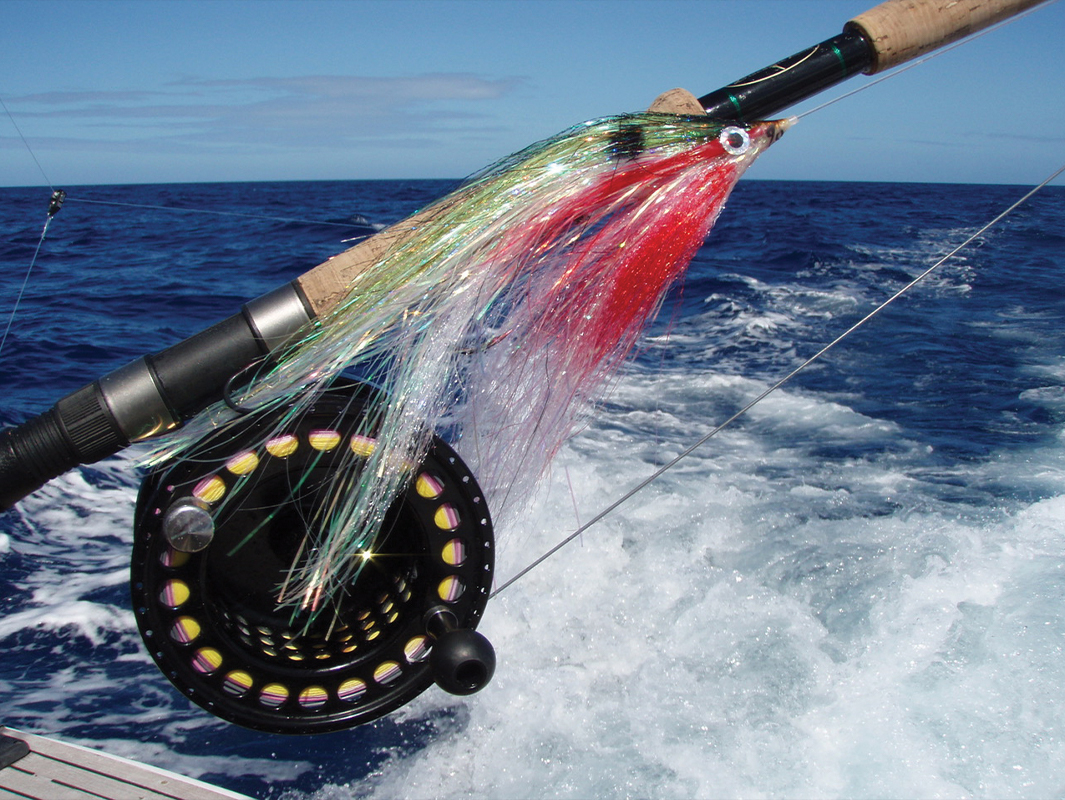
Teaser Spread, Lures and Baits
The right spread to use is up to you, just keep things simple. Most of the time, I run only two teasers a single lure long and a lure behind a string of squids short. A basic dredge does complement the two-lure spread and really is as much as you ever need. When selecting…
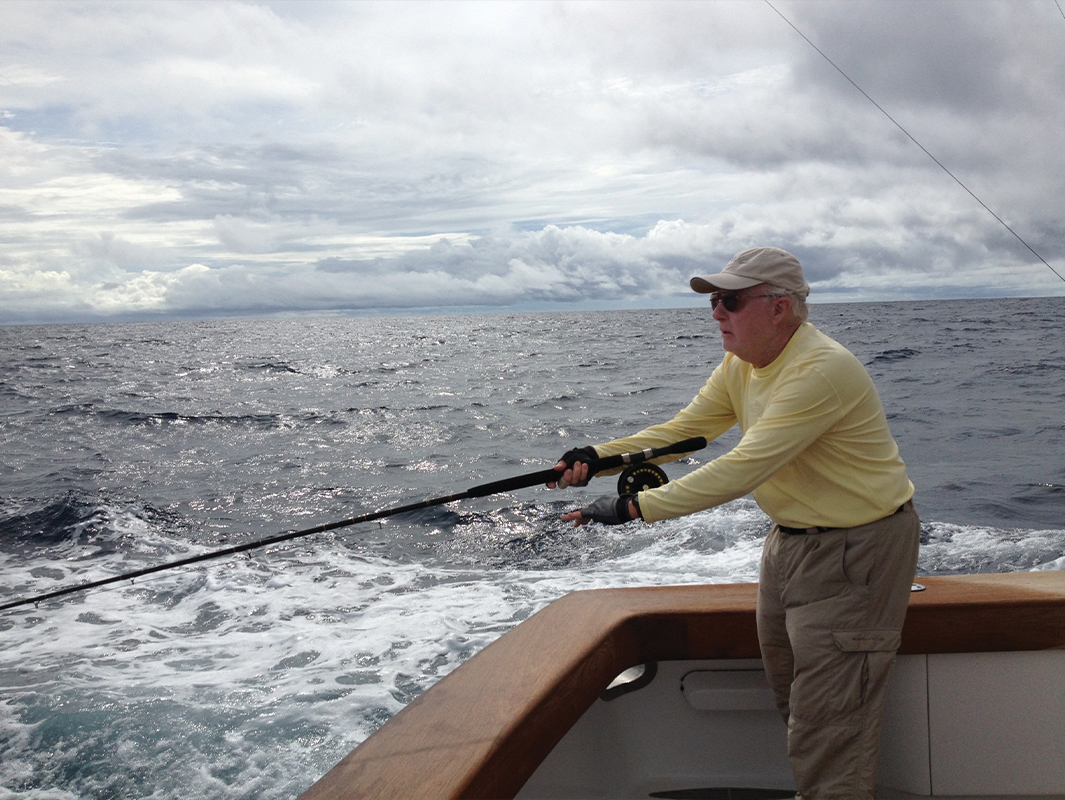
Like what you’re reading? Click below for the story Issue and read the full article.
Purchase Oct/Nov 2017 Print IssuePurchase Oct/Nov 2017 Digital Issue
You can also purchase our Digital Subscription here or Print and Digital Subscription here.
Don’t Forget to Check Out Our Sportfishing Job Board! Did You Know? It’s the perfect platform for seeking skilled captains and mates. Whether you’re on the hunt for your dream team or looking to join one, your next big adventure begins here. Explore the opportunities now! Click Here
Dive Deeper into the World of Sportfishing
You’ve just experienced a taste of the exceptional content featured in the pages of InTheBite Sportfishing Magazine. If you found this engaging, you’re in for a treat with our full publication. Whether you prefer the tactile experience of print or the convenience of digital or both we have a special offer for you.
Unlock Exclusive Savings: Enjoy 50% Off Your Subscription!
Are you ready to explore the thrilling world of sportfishing from the comfort of your home? Subscribe now and embark on a journey filled with captivating stories, expert insights, and insider tips. Choose between our digital or print edition and secure an incredible 50% discount on your subscription.
Subscribe today and get ready for an adventure like no other. Click here to subscribe and elevate your sportfishing experience with InTheBite Sportfishing Magazine.

